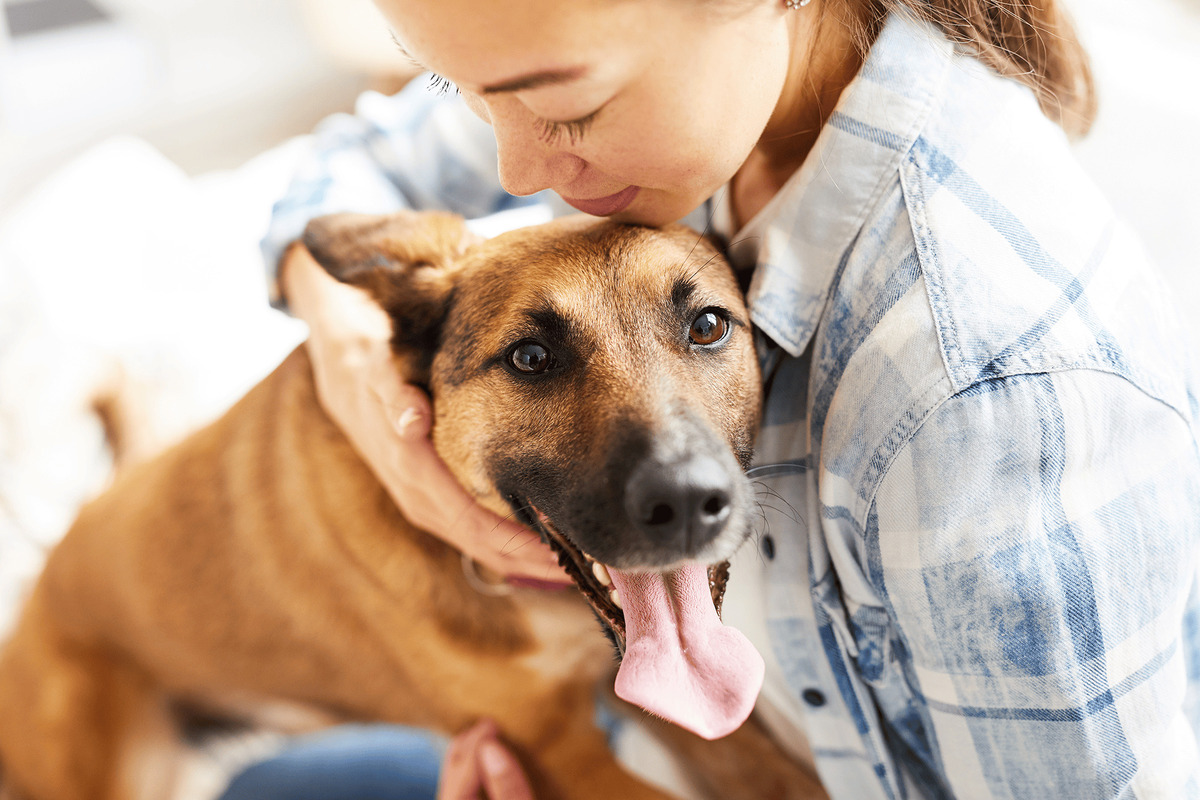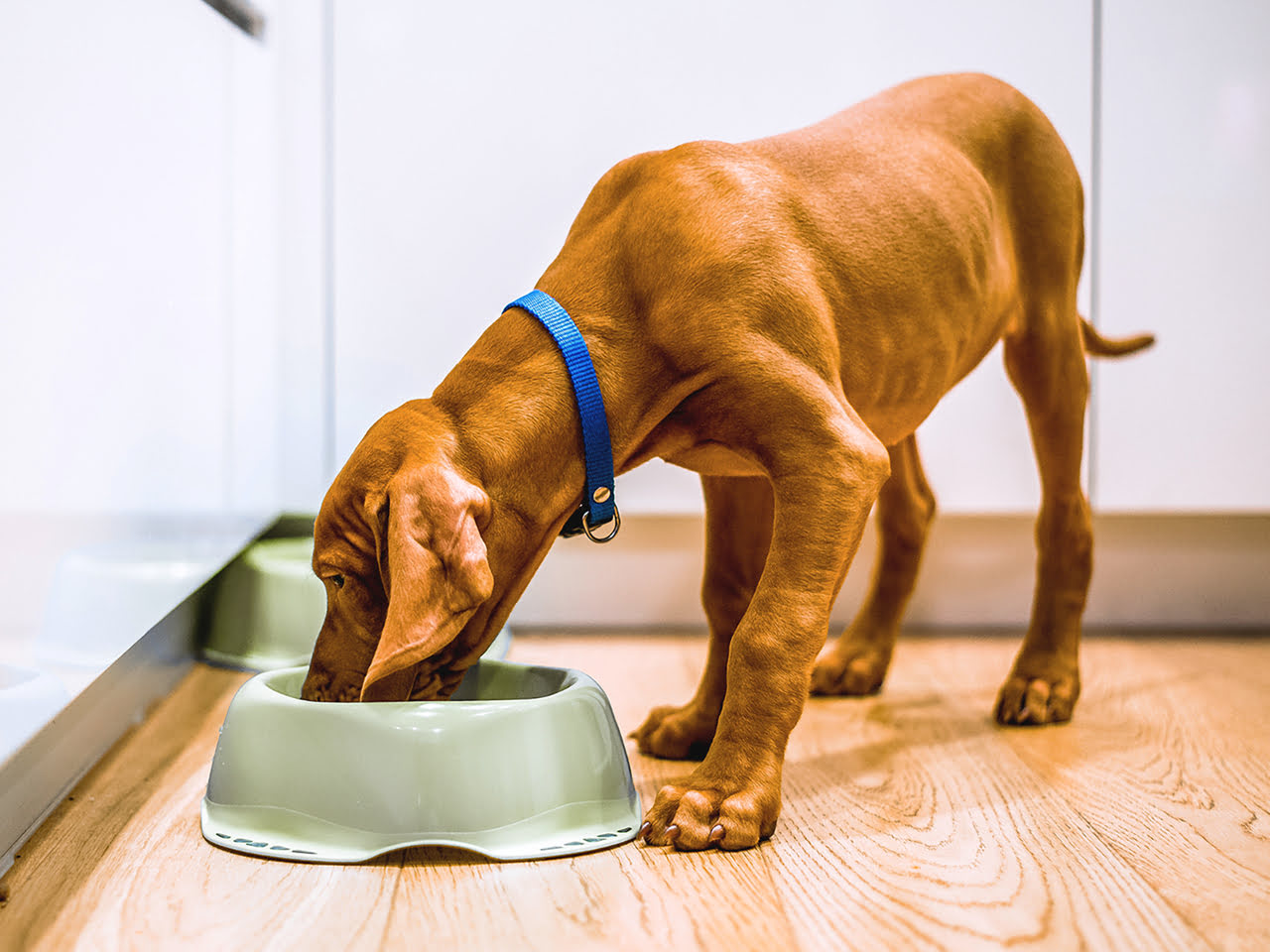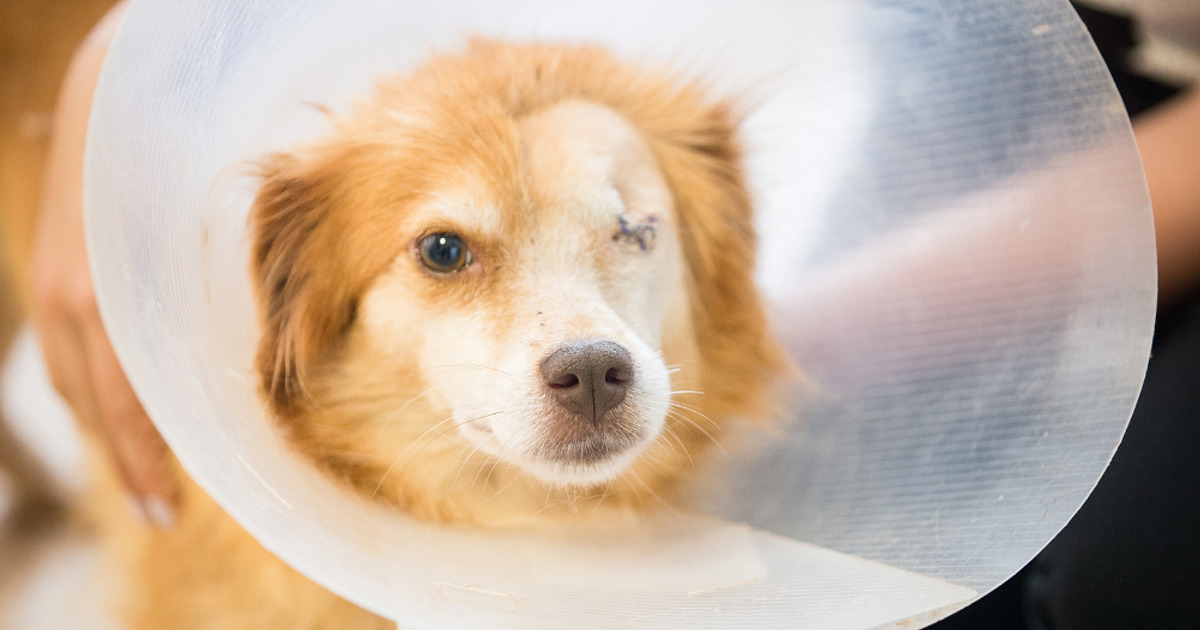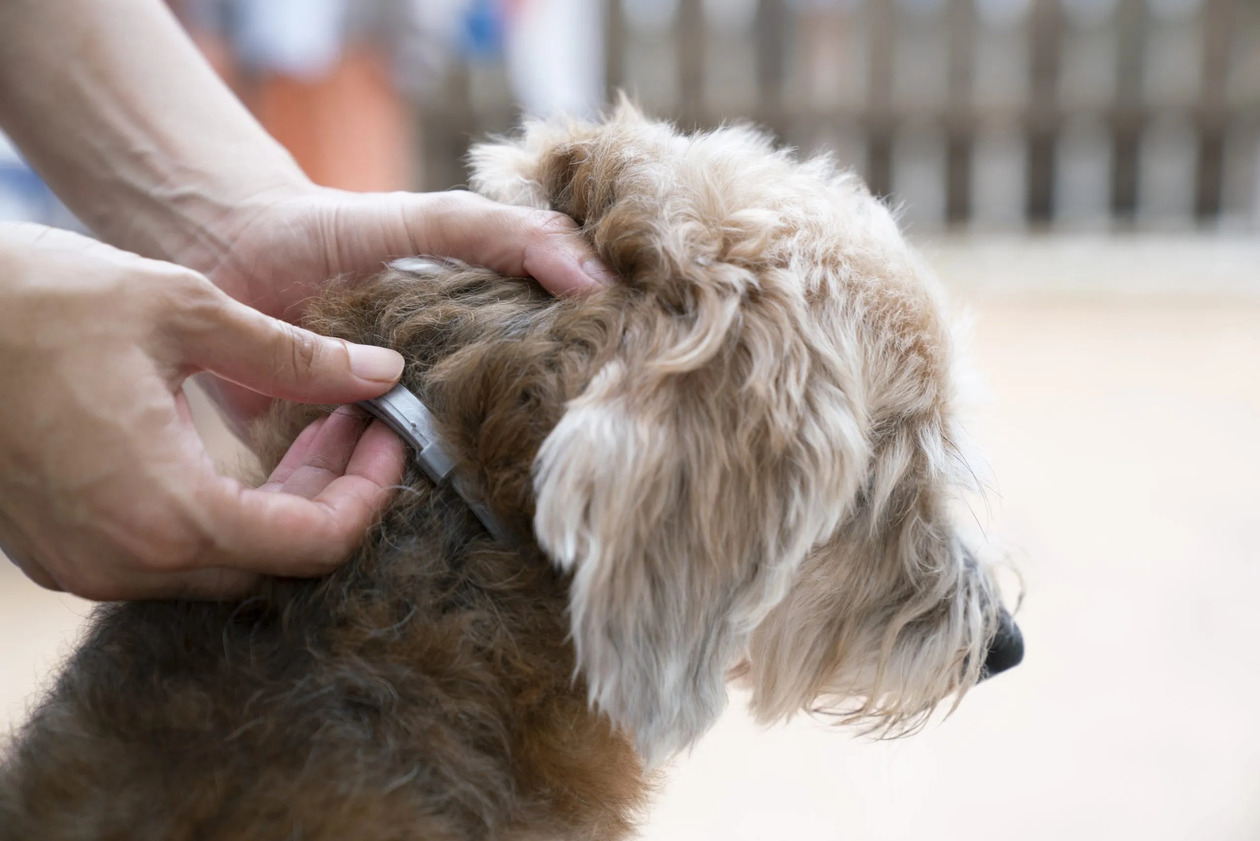Home>Health & Wellness>Common Health Issues>How Long Does It Take For Fleas To Die On A Dog


Common Health Issues
How Long Does It Take For Fleas To Die On A Dog
Modified: February 21, 2024
Learn about common health issues for dogs and find out how long it takes for fleas to die on a dog. Get expert tips and advice to keep your pet healthy.
(Many of the links in this article redirect to a specific reviewed product. Your purchase of these products through affiliate links helps to generate commission for Pawsomeoldies.com, at no extra cost. Learn more)
Table of Contents
Introduction
Fleas are a common nuisance for dogs and their owners. These tiny, blood-sucking parasites can cause discomfort, itching, and even transmit diseases to our furry friends. Understanding the flea life cycle and the factors that affect their lifespan on a dog is crucial for effective flea control. Additionally, knowing the methods for killing fleas on a dog and the time it takes for different flea treatments to work can help pet owners make informed decisions to protect their beloved companions.
Fleas are not just a seasonal problem; they can thrive indoors throughout the year, making it essential to address flea infestations promptly. By gaining insights into the behavior and vulnerabilities of these pests, pet owners can take proactive measures to safeguard their dogs from the irritation and potential health risks associated with fleas.
In this article, we will delve into the intricate world of fleas and their impact on dogs. We will explore the flea life cycle, the factors influencing flea lifespan on a dog, and the various methods for eradicating these pesky parasites. Furthermore, we will uncover the duration it takes for different flea treatments to take effect, empowering pet owners with the knowledge needed to combat fleas effectively.
Understanding the flea life cycle
Fleas undergo a complete metamorphosis, progressing through four distinct stages: egg, larva, pupa, and adult. Understanding this life cycle is crucial for effectively combating flea infestations on dogs.
Egg Stage
The flea life cycle begins when an adult female flea lays eggs on the host animal, which then fall off into the environment. These tiny, oval-shaped eggs are barely visible to the naked eye and can be found in the dog's bedding, carpets, and other areas where the pet spends time.
Larva Stage
Once the eggs hatch, they give rise to larvae. These worm-like, legless creatures are highly mobile and feed on organic debris and flea feces in the environment. They avoid light and tend to burrow into carpets, upholstery, and soil, making them challenging to detect.
Pupa Stage
In the pupa stage, the larvae spin a cocoon and transform into pupae. This protective casing shields the developing flea from external threats. Pupae are resilient and can remain dormant for several weeks or even months, waiting for the right conditions to emerge as adult fleas.
Adult Stage
When environmental conditions are favorable, adult fleas emerge from their pupal casings. These blood-feeding parasites seek out a host, such as a dog, to feed on and reproduce. Adult fleas can survive for several weeks on the host, laying hundreds of eggs during their lifespan.
Understanding the flea life cycle is essential because it highlights the various stages at which fleas can be targeted for control. Effective flea management involves disrupting the life cycle at multiple points to prevent reinfestation. By addressing eggs, larvae, pupae, and adult fleas, pet owners can tackle the infestation comprehensively and minimize the risk of future flea problems.
By gaining insights into the intricacies of the flea life cycle, pet owners can adopt proactive measures to combat fleas effectively, safeguarding the well-being of their canine companions.
Factors affecting flea lifespan on a dog
Several factors influence the lifespan of fleas on a dog, impacting their ability to thrive and reproduce. Understanding these factors is crucial for implementing effective flea control measures and safeguarding the well-being of canine companions.
-
Environmental Conditions: The environment plays a significant role in determining flea survival. Fleas thrive in warm, humid conditions, with optimal temperatures ranging between 70-85°F (21-29°C) and humidity levels of 70% or higher. In such environments, fleas can reproduce rapidly, leading to infestations on dogs and within households.
-
Host Health and Hygiene: The health and hygiene of the host dog can impact flea lifespan. Dogs with compromised immune systems or underlying health issues may be more susceptible to flea infestations, providing an ideal environment for fleas to thrive. Regular grooming and bathing practices can help reduce flea populations on dogs, thereby affecting flea lifespan.
-
Presence of Other Animals: The presence of other animals, such as cats or rodents, in the household can contribute to flea infestations on dogs. Fleas can easily transfer between different animal hosts, leading to increased populations and prolonged lifespans on dogs.
-
Flea Control Measures: The implementation of flea control measures directly affects flea lifespan on dogs. Regular use of flea preventatives, such as topical treatments, oral medications, or flea collars, can significantly reduce flea populations and limit their lifespan on the host animal.
-
Indoor and Outdoor Activities: Dogs that spend a significant amount of time outdoors, especially in areas with high flea populations, are more likely to attract fleas. Additionally, indoor environments with carpeting, upholstery, and bedding provide ideal breeding grounds for fleas, influencing their lifespan on dogs.
-
Geographical Location: Geographical location plays a role in determining the prevalence and lifespan of fleas on dogs. Certain regions with milder climates and higher humidity levels may experience prolonged flea seasons, increasing the likelihood of flea infestations and impacting flea lifespan on dogs.
Understanding these factors empowers pet owners to take proactive measures to mitigate flea infestations and minimize the impact of fleas on their dogs. By addressing environmental conditions, implementing regular flea control measures, and maintaining the health and hygiene of their canine companions, pet owners can effectively reduce flea lifespan and create a safer, more comfortable environment for their beloved pets.
Methods for killing fleas on a dog
When it comes to eradicating fleas from a dog, several effective methods can be employed to eliminate these pesky parasites and provide relief to the canine companion. It's essential for pet owners to choose a method that not only targets adult fleas but also addresses other stages of the flea life cycle, including eggs, larvae, and pupae, to prevent reinfestation. Here are some proven methods for killing fleas on a dog:
-
Topical Flea Treatments: Topical flea treatments, commonly known as spot-on treatments, are applied directly to the dog's skin, usually between the shoulder blades. These treatments contain active ingredients that target adult fleas upon contact, effectively killing them. Additionally, some topical treatments have residual effects, preventing flea eggs and larvae from developing. It's important to choose a product specifically formulated for dogs, as flea treatments designed for other animals may contain ingredients that are harmful to canines.
-
Oral Flea Medications: Oral flea medications are administered to dogs and work systemically to kill fleas when they bite the host animal. These medications are available in various forms, including chewable tablets and flavored pills, making them easy to administer. Oral flea medications are effective at targeting adult fleas and can provide rapid relief to dogs suffering from flea infestations. Some oral medications also have the added benefit of preventing flea eggs from hatching, contributing to comprehensive flea control.
-
Flea Collars: Flea collars are another popular method for killing fleas on dogs. These collars contain active ingredients that are gradually released onto the dog's skin and coat, providing continuous protection against fleas. Flea collars are designed to target adult fleas and may also disrupt the flea life cycle by preventing egg development. When using flea collars, it's important to ensure a proper fit and to follow the manufacturer's guidelines for optimal effectiveness.
-
Flea Shampoos and Dips: Flea shampoos and dips are effective for quickly killing adult fleas on a dog's coat. These products are applied during bath time and work to eliminate existing fleas through contact. While flea shampoos and dips provide immediate relief, they may not offer long-term protection against reinfestation. Therefore, they are often used in conjunction with other flea control methods for comprehensive and sustained flea management.
-
Environmental Treatments: In addition to directly treating the dog, addressing the indoor and outdoor environments is crucial for effective flea control. Vacuuming, washing bedding, and using flea sprays or foggers in the home can help eliminate flea eggs, larvae, and pupae. Outdoor areas frequented by the dog should also be treated to reduce flea populations in the environment.
By employing these methods in a comprehensive flea control regimen, pet owners can effectively eliminate fleas from their dogs and create a comfortable, flea-free environment for their beloved pets. It's important to consult with a veterinarian to determine the most suitable flea control approach based on the dog's health, lifestyle, and the severity of the flea infestation.
How long it takes for different flea treatments to work
The effectiveness of flea treatments can vary based on the method of application, the active ingredients used, and the specific formulation of the product. Understanding the timeline for different flea treatments to take effect is crucial for managing flea infestations and providing timely relief to dogs suffering from flea-related discomfort. Here's a detailed look at the expected timelines for various flea treatments to work:
-
Topical Flea Treatments: Topical flea treatments typically start working within 12 to 24 hours after application. The active ingredients in these treatments quickly spread across the dog's skin and coat, targeting adult fleas upon contact. Additionally, some topical treatments have residual effects, providing ongoing protection against flea infestations for several weeks. It's important to follow the product-specific guidelines regarding reapplication intervals for sustained efficacy.
-
Oral Flea Medications: Oral flea medications are designed to work rapidly, with many products starting to kill fleas within 30 minutes to 2 hours after administration. These medications work systemically, meaning they are absorbed into the dog's bloodstream and distributed throughout the body. As a result, when fleas bite the dog, they are exposed to the active ingredients, leading to swift elimination. Some oral flea medications also have the added benefit of preventing flea eggs from hatching, contributing to long-term flea control.
-
Flea Collars: Flea collars typically begin working within 24 hours of application. The active ingredients in the collar gradually disperse onto the dog's skin and coat, providing continuous protection against fleas. While the collar targets adult fleas, it may also disrupt the flea life cycle by preventing egg development. Flea collars are designed to offer extended protection, with many products remaining effective for several months before requiring replacement.
-
Flea Shampoos and Dips: Flea shampoos and dips work immediately upon application, effectively killing adult fleas present on the dog's coat. These products provide rapid relief from flea infestations, offering dogs immediate comfort. However, it's important to note that flea shampoos and dips may not provide long-term protection against reinfestation and are often used in combination with other flea control methods for comprehensive management.
-
Environmental Treatments: Environmental flea treatments, such as vacuuming, washing bedding, and using flea sprays or foggers, can yield results within hours to days. These treatments target flea eggs, larvae, and pupae in the dog's living environment, effectively reducing flea populations. Consistent environmental treatments are essential for breaking the flea life cycle and preventing reinfestation.
By understanding the timelines for different flea treatments to take effect, pet owners can make informed decisions regarding the most suitable approach for managing flea infestations on their dogs. It's important to consult with a veterinarian to determine the most effective and safe flea control regimen based on the dog's specific needs and the severity of the flea infestation.
Conclusion
In conclusion, understanding the complexities of the flea life cycle and the factors influencing flea lifespan on dogs is paramount for effective flea control. By gaining insights into the egg, larva, pupa, and adult stages of the flea life cycle, pet owners can adopt proactive measures to disrupt the cycle and prevent reinfestation. Additionally, considering environmental conditions, host health, flea control measures, and geographical location empowers pet owners to create a safer and more comfortable environment for their canine companions.
When it comes to eradicating fleas from dogs, a multi-faceted approach is essential. Employing methods such as topical flea treatments, oral medications, flea collars, shampoos, dips, and environmental treatments can effectively eliminate fleas and provide relief to dogs suffering from flea infestations. It's crucial to choose a method that not only targets adult fleas but also addresses other stages of the flea life cycle to prevent reinfestation.
Understanding the timelines for different flea treatments to take effect is equally important. Whether it's topical treatments, oral medications, flea collars, or environmental treatments, knowing when to expect results enables pet owners to make informed decisions and provide timely relief to their dogs.
By consulting with veterinarians and adhering to product-specific guidelines, pet owners can tailor flea control regimens to suit their dogs' specific needs and the severity of the flea infestation. Regular monitoring and consistent preventive measures are key to maintaining a flea-free environment and safeguarding the well-being of canine companions.
In essence, combating fleas on dogs requires a comprehensive understanding of flea behavior, proactive prevention, and timely intervention. By integrating knowledge, effective methods, and a vigilant approach, pet owners can ensure that their beloved dogs are protected from the discomfort and health risks associated with flea infestations.













